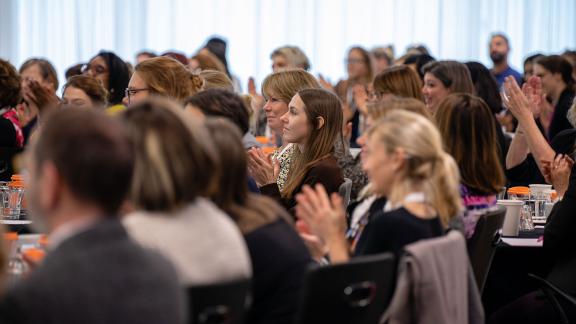NHS Reset: Two weapons we must learn to deploy more effectively

In this blog, part of a series of comment pieces from NHS Confederation leaders, members and partners, Niall Dickson reflects on a duo of devices that will need to come into their own.
As a crude mechanism for running the NHS in peacetime, command and control has failed time and again. Even during the current emergency, innovation and responsiveness have flourished when regulation and top-down processes have been relaxed or disappeared. Now, one of the biggest dangers we face as we rebuild the service will be a return to old ways which stifle initiative.
At the same time, most of us would concede that in this war against the virus an element of command and control has been essential; it is one of the strengths of our socialised healthcare system that is envied in other healthcare systems.
It matters because when it works, things can happen fast throughout the service and as the pattern of the virus changes, so too can our responses. Throughout the world, our understanding has been limited from the start and it remains limited now, but as our understanding grows, we can and should adapt quickly.
And that includes being able to change our collective mind with impunity. As the virus adapts, we adapt. As we understand more, we can and should take a different view. Changing your mind – in political speak ‘doing a U-turn’ – is seen in that world as a sign of weakness, as is admitting that you got something wrong. In some respects then it is not command and control itself that is necessarily wrong, but the way it is deployed.
What to do about masks
The story on masks illustrates this well. When COVID-19 first hit us, the scientific advice on masks was relatively straightforward. Outside medical settings, face masks and coverings were not only regarded as ineffective, they were difficult for users to wear properly and could provide a false sense of security. That has now changed. The latest WHO guidance, issued on Friday, states that to prevent COVID-19 transmission effectively in the community, “governments should encourage the general public to wear masks in specific situations and settings as part of a comprehensive approach”.
Meanwhile, the pattern of spread here is changing, as is our understanding of it. We are now able to see more clearly the variations between regions and localities, and we can see that the critical R number can be different in the community from health and care settings. In the community, the virus is still circulating – estimates are around one in 600 people, but the dangers of a flare up now lie more in hospitals and care homes, with local outbreaks possible in various other local facilities. That is why the NHS Confederation has been so strident in demanding that Test and Trace is built on a strong local public health base, working alongside local NHS and care organisations.
On Friday, the government rushed out its announcement about masks being required for all hospital staff and visitors, without warning. We all accept that the centre is under an obligation to respond quickly to scientific advice, which in the current environment will nearly always be time critical. But given this change will not come in until 15 June, there was an opportunity to consult and engage with trust and other frontline leaders before announcing the changes. In classic fashion, while there was a nod to social care, there was no mention of what it meant for other healthcare settings, in mental health, the community and primary care. We needed prior discussions with leaders and clinicians in these settings as well.
This matters – it is not just about politics; it is about effective policy and ultimately about people’s lives. It should be possible to discuss proposed changes, giving time to communicate and cascade them effectively at an operational level. Even within a Level 4 incident, such an approach is possible – and as we move to Level 3, we most certainly need to see a different mentality.
The other weapon
Aside from using command and control judiciously, the lesson from all this is that we must learn to deploy better one of the other potent and effective weapons in the battle against this virus – and here I am not referring to PPE, or testing or masks, but to effective communication. In this next phase, this will be more crucial than ever for everyone in a leadership position, locally and nationally. The virus will spread or not spread because of individual behaviours, and the information and the explanations to support staff and the public will need to be more nuanced and complicated. For many, the decisions they will make are now more likely to involve an element of risk assessment and to be more scary.
While we may criticise the centre and the politicians, all of us in leadership positions need to be as clear as we can be, while acknowledging the uncertainties and the risks.
Lifting aspects of the lockdown is a gamble, but perhaps more than most, those involved delivering health and care services are seeing the mental and physical toll, as well as the benefits.
Leadership is partly about making difficult choices between far from ideal paths and then being prepared to turn back when the wrong path has been chosen.
Supporting BME staff
This week especially there is another aspect of communication that confronts us all. The Black Lives Matter campaign should not have told us anything we did not know, and it should be seen as a call for action, not for more wringing of hands. One area for the service to think about now is the support needed for black and minority ethnic (BME) staff and making sure that in every organisation, we have mechanisms for listening and responding to their concerns and fears, which are real and considerable.
Niall Dickson is chief executive of the NHS Confederation. Follow them on Twitter @NHSC_Niall and @NHSConfed



